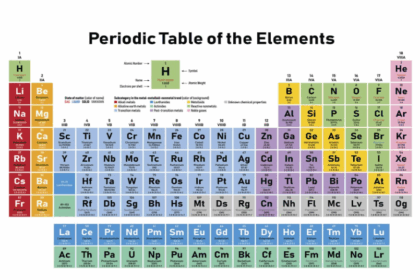U.S. officials tried to persuade Europe for years to buy American natural gas as a bulwark against Russia, with the Trump administration dubbing it “molecules of freedom.” But most countries stuck with the cheaper Russian supplies, with some expressing environmental concern about the fruits of U.S. fracking.
Now, as Europe confronts the possibility of a serious supply squeeze amid Russian hostilities toward Ukraine, the U.S. is trying to help Europe secure emergency gas supplies. But there is only so much the Biden administration can do: Most American gas has been sold to other customers, and Europe has limited facilities to import more.
“The United States and the EU are working jointly towards continued, sufficient, and timely supply of natural gas to the EU from diverse sources across the globe to avoid supply shocks, including those that could result from a further Russian invasion of Ukraine,” European Commission President Ursula von der Leyen and President Biden said Friday in a joint statement.
Russia, which typically provides roughly 40% of Europe’s natural gas, has sought to play down concerns that it could substantially decrease the flow of fuel to the continent. Analysts are skeptical that it would do so if it invaded Ukraine, noting that the sales are a significant source of Russian revenue. But if Russian supplies did get cut off during winter, Europe would pay a heavy price—it remains as dependent on Russian gas as ever to heat homes and generate electricity.
Poland and some other European countries signed long-term deals to buy U.S. liquefied natural gas, or LNG, and built the terminals needed to take the shipments and convert them back into gaseous fuel that could be put in pipelines and sent to customers. In the past decade, France, Greece, Lithuania and a few others erected new terminals. But Germany and many others didn’t.
Biden administration officials have held conversations in recent days with gas shippers in the U.S., Europe and Qatar as well as LNG importers in Japan and South Korea, to line up additional supplies to Europe, according to U.S. officials and energy executives. But there is virtually no spare supply available. Some U.S. exporters are already sending as many cargoes as they can to Europe without breaking supply contracts with other customers.

A shale-gas drilling site in Pennsylvania. Some European nations have voiced concerns about fracking.
Photo: Keith Srakocic/Associated Press
That has left Europe to turn to an LNG spot market that is too small to ameliorate a substantial loss of Russian supplies, said Charif Souki, chairman of U.S. LNG company Tellurian Inc., which is trying to build an export facility in Louisiana. Mr. Souki, who pioneered U.S. LNG exports as the co-founder of Cheniere Energy Inc., said the Biden administration’s efforts are unlikely to accomplish much.
“You’re not going to change the fact that the world is short,” said Mr. Souki.
After frackers unleashed vast amounts of natural gas over the past decade, the U.S. went from being a net importer of LNG to becoming the world’s largest exporter in December, supplanting Qatar for the first time.
As vice president in the Obama administration, Mr. Biden billed U.S. LNG as a reliable alternative to Russian gas after Europe faced gas disruptions in 2009 when Russia shut off shipments to the continent through Ukraine. The Trump administration pressed LNG even further. In 2019, then-Secretary of State Mike Pompeo implored a conference of top energy executives to use U.S. oil and gas to counter foreign rivals and promote free trade and democracy around the world.
“We’re not just exporting American energy. We’re exporting our commercial value system to our friends and to our partners,” Mr. Pompeo said.
The American position found eager support in Poland, which has tried to distance itself economically and politically from Russia since the end of the Cold War.
For years, after the fall of the Soviet Union, Poland bought gas from Russia at a price far higher than the rate its neighbors enjoyed, a disparity Polish officials took as a geopolitical message from Moscow. By 2006, Poland began constructing an LNG terminal on the Baltic Sea coast. In 2016, that terminal began operations. In 2018 and 2019, Poland struck long-term supply agreements with American companies including Cheniere Energy and Sempra Energy.
By early next year, Poland expects to be independent of Russian gas imports, though it doesn’t preclude buying gas from Moscow on the spot market.
“This is a geopolitical game, and we want to be independent,” said Witold Waszczykowski, a former Polish foreign minister. “It’s a different game from Germany.”
Germany and France were cool to U.S. overtures. Proposed LNG import facilities in Germany have been delayed as Russia built a new pipeline, Nord Stream 2, that is set to double the Russian gas exported to Germany. The pipeline is now completed but hasn’t begun service as it awaits final approval from German regulators.
The French government, meanwhile, asked utility company Engie SA in 2020 to drop plans to sign a multibillion-dollar contract for U.S. LNG over concerns about fracking. Sweden in 2019 blocked a permit that would have allowed an import terminal access to the region’s main power grid, on grounds it would increase Sweden’s dependency on fossil fuels.
A glut of global gas before the pandemic left buyers in Europe and other regions less inclined to sign long-term deals. But the LNG market has recently swung from abundance to scarcity as global economies reopened following pandemic-induced slowdowns.
SHARE YOUR THOUGHTS
Could a Russian invasion of Ukraine fundamentally alter how the EU sources its natural gas? Join the conversation below.
European gas prices have recently reached record highs. As a result, the market is already directing much of the spare supply to Europe. Last January, the U.S. sent about 20% of its LNG cargoes to Europe, according to S&P Global Platts. This January, it has sent nearly 70%. But most operational LNG facilities in the world’s largest exporters—the U.S., Qatar, and Australia—are running at full capacity and there is little new supply to add.
European reliance on Russian gas could grow in the near term as some countries attempt to transition to greener energy sources. Russian supplies of gas to Europe grew about 14% between 2015 and September of last year, according to Platts, before volumes began dropping as tensions over Ukraine mounted.
The European Investment Bank in 2019 said it would stop lending money to oil-and-gas companies, and the European Bank for Reconstruction and Development said last year it will encourage countries to move away from fossil fuels, which could make Europe more reliant on existing gas sources.
Helima Croft, head of global commodity strategy at RBC Capital Markets, said the U.S. and Europe need to think about the continent’s longer-term energy security once the Ukraine situation is resolved.
“Is natural gas an option or not?” said Ms. Croft. “We can’t get an answer on whether gas is a part of decarbonization.”
Write to Collin Eaton at [email protected], Christopher M. Matthews at [email protected] and Drew Hinshaw at [email protected]
Copyright ©2022 Dow Jones & Company, Inc. All Rights Reserved. 87990cbe856818d5eddac44c7b1cdeb8








